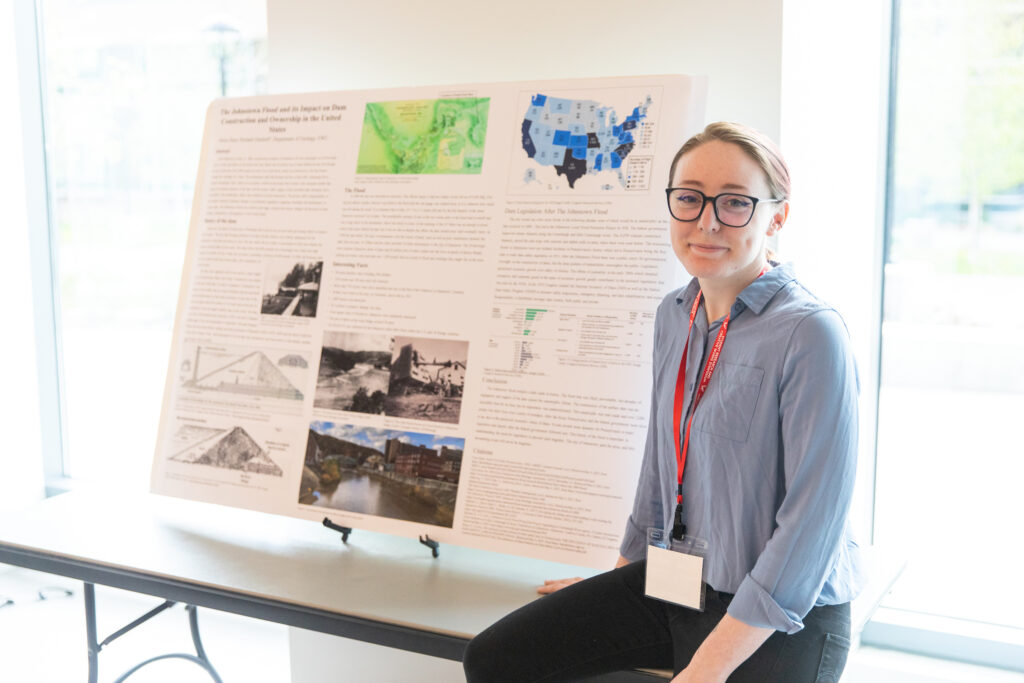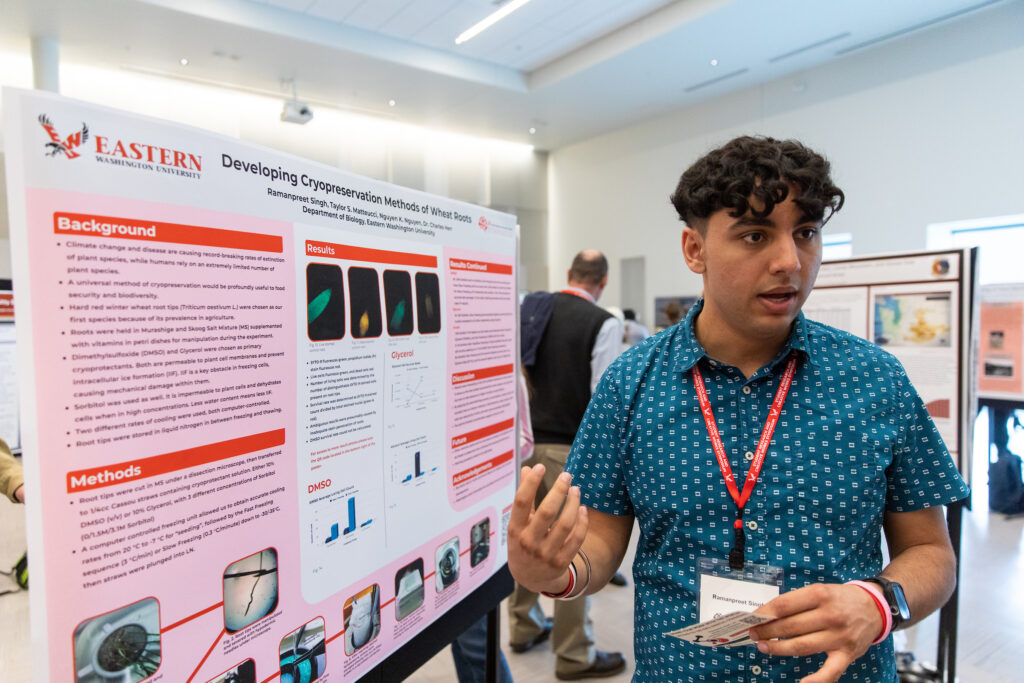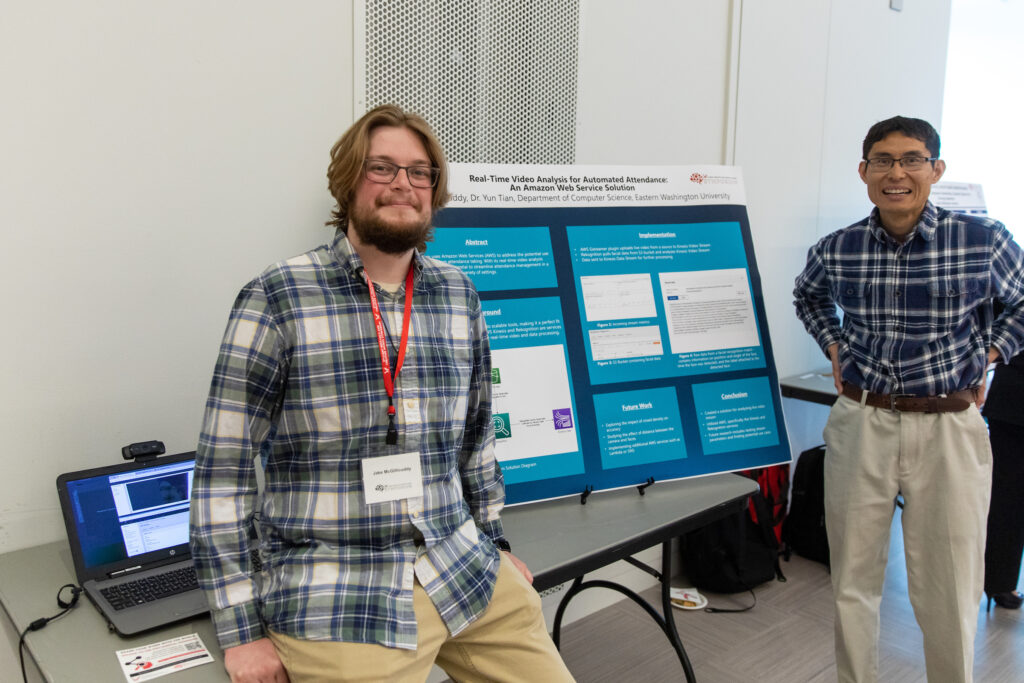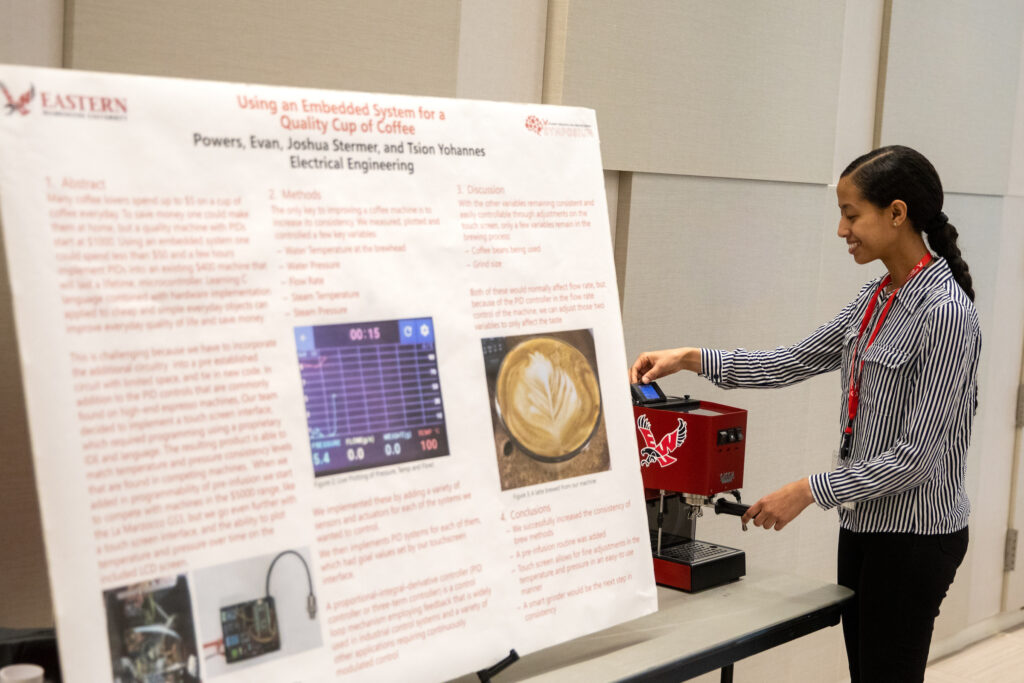This year’s Student Research and Creative Works Symposium, held May 9-10, saw students from a variety of disciplines present their research and creative work to the university community.
Sponsored by longtime supporter STCU, the symposium is one of Eastern’s largest campus-wide academic events, providing students an opportunity to showcase their scientific and scholarly accomplishments, explore the research and creative projects of their peers, and interact with students and faculty members from across academic disciplines. This year we have 243 students presenting 117 posters, 45 oral presentations, and 23 creative works, mentored by 82 faculty members. (Click here for a full list of Student Research and Creative Works Symposium Projects.)
On Tuesday, the event’s first day, students gathered in the Fine Arts Complex to begin the creative portion of the symposium. Exhibitions consisted of art, design and film projects in the Art Building gallery and lobby, as well as theater and music-composition presentations in the gallery, studio and Theater Building.
On day two, the focus was on research. Students and their posters filled the PUB NCR, where participants explained the nature of their work via oral presentations and interactive exhibits.
Alexa Hays, a senior majoring in environmental science, couldn’t wait to educate visitors on the in-depth research she had done on Pennsylvania’s 1889 Johnstown Flood and its impact on subsequent dam construction and ownership in the United States.

This was Hays’ capstone project. She created it for the class, “Waters of the West.” the project was especially personal for Hays because she is from Johnstown herself. She will be graduating at the end of this quarter, she said, and is eager to get out into the professional world to “prevent things like this from happening.”
Ramanpreet Singh and Taylor Matteucci, both seniors studying biology with a pre-med and pre-dental focus, presented “Developing Cryopreservation Methods of Wheat Roots,” a directed-studies project in collaboration with Charles Herr, a professor of biology at EWU. The project has been two years in the making, they said.

Cryopreservation, in layman’s terms, means to freeze something in order to preserve it. Singh, Matteuccii, and a third student partner, Nguyen K. Nguyen, cut root tips under a dissection microscope, sealed them into a solution and then used a computer-controlled freezing unit to preserve them for seeding.
The students explained that climate change and disease are causing record-breaking rates of plant extinction. Cryopreservation is a way to combat extinctions in order to maintain food security and biodiversity for the future.
“It’s great to work on something that really matters,” says Matteuccii.
Jake McGillicuddy, a senior computer science major, was there to present his own directed-studies project, completed with Yun Tian, an associate professor of computer science. The project was titled “Real-Time Video Analysis for Automotive Attendance: An Amazon Web Service Solution.” McGillicuddy’s program uses Amazon Web Services, with its real-time video analysis capabilities, to streamline attendance management in a variety of settings including the classroom.

Tsion Yohannes, Evan Powers and Joshua Stermer, senior electrical engineering majors, also shared their project at the event.
Their work, “Using an Embedded System for a Quality Cup of Coffee,” focused on the amount of money java lovers spend on coffee. It is cheaper to make your own coffee at home, but the quality is typically not the same; not the same, that is, unless you have a restaurant-grade coffee maker which can set you back $1,000 or more.

Yohannes, Powers, and Stermer installed a critical component part of commercial grade machines into a home coffee maker to significantly improve the quality of the home brew — at about half the price of the fancy machines.